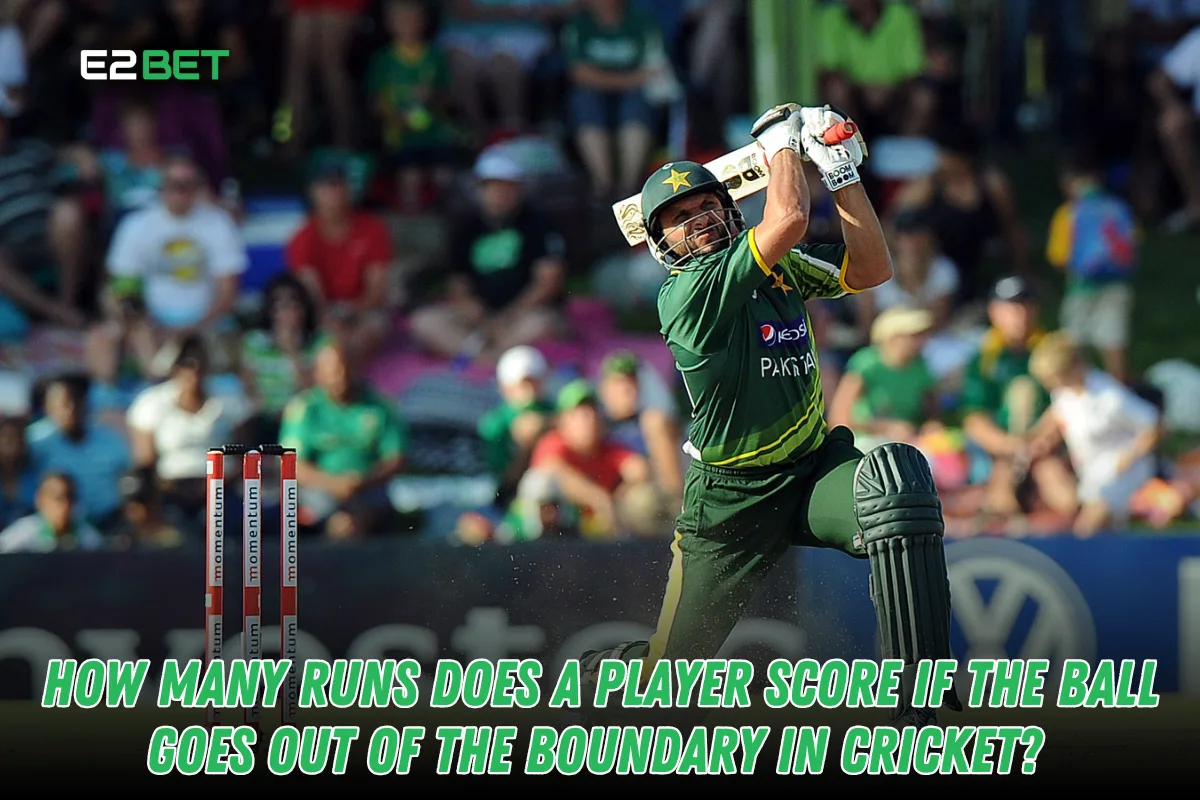Cricket is a game of strategy, skill, and big-hitting moments. One of the most exciting aspects of cricket is when a batsman sends the ball flying past the boundary rope. But have you ever wondered exactly how many runs are awarded when the ball crosses the boundary? Whether it’s a four or a six, understanding the cricket scoring system is essential for every fan and player.
In this article, we’ll break down boundary rules in cricket, ICC scoring laws, and how overthrows affect run-scoring.
What Is a Boundary in Cricket?
In cricket, a boundary refers to the edge of the playing field, marked by a rope or a fence. When the ball reaches or crosses this line after being hit by the batsman, runs are awarded depending on how the ball traveled.
There are two main types of boundaries in cricket:
- Four Runs – are awarded if the ball makes contact with the ground before crossing the line..
- Six Runs – If the ball clears the boundary on the full (without bouncing).
When Is Four Runs Awarded?
A batsman scores four runs when:
- The ball is hit and reaches the boundary rope after touching the ground.
- It deflects off a fielder and crosses the boundary (unless it’s an overthrow).
- The ball touches a fielder inside the boundary but still rolls over the rope.

Examples of Four-Run Boundaries
- A batsman executes a perfect cover drive, and the ball races to the rope.
- A mistimed shot bounces near the pitch but still finds its way past the fielder.
When Is Six Runs Awarded?
A batsman scores six runs when:
- The ball is struck cleanly and crosses the boundary rope without touching the ground.
- It lands outside the field directly from the bat, making it a perfect six.
Records for the Longest Sixes in Cricket
- Shahid Afridi – 158 meters vs. South Africa
- Brett Lee – 130 meters vs. West Indies
- Chris Gayle – Multiple 120m+ sixes in T20s
What Happens If the Ball Hits the Boundary Rope?
If the ball touches the boundary rope, it is considered to have crossed the boundary, and four runs are given.
This applies even if:
- A fielder tries to stop the ball but touches the rope.
- The ball lands just inside the field and then rolls onto the rope.
Can a Batsman Run After Hitting a Four or Six?
No, once a boundary is scored (either a four or a six), extra runs cannot be taken. The umpire signals the boundary, and the play restarts with the next delivery.
However, if the batsmen are running between the wickets and the ball reaches the boundary, they are awarded the boundary’s runs instead of their completed runs.
Overthrows and Boundary Runs
Overthrows occur when a fielder’s throw goes beyond the wicketkeeper or fielders, leading to extra runs. If an overthrow results in the ball crossing the boundary, the batting team is awarded the runs they completed + four extra runs.
Example of an Overthrow Boundary:
- The batsmen run two runs, but a misfield results in the ball rolling to the boundary.
- They are awarded 2 + 4 = 6 runs instead of just two.
Umpire Signals for Boundaries
The umpire’s hand gestures are crucial for signaling boundaries:
- Four Runs: The umpire waves one arm back and forth.
- Six Runs: The umpire raises both arms above the head.
These signals help fans and players instantly recognize the scoring outcome.
Impact of Boundaries in Different Cricket Formats
1. Test Cricket
- Boundaries are less frequent due to longer game formats and field placements.
- Players focus more on defensive play and strike rotation.
2. One-Day Internationals (ODIs)
- Boundaries play a significant role in increasing run rates.
- Players like Rohit Sharma, Virat Kohli, and David Warner are known for their aggressive boundary-hitting abilities.
3. T20 Cricket
- Boundaries are a key factor in a team’s success.
- Power-hitters like Chris Gayle, AB de Villiers, and Jos Buttler rely on frequent sixes.
Famous Boundary-Hitters in Cricket
Some of the best boundary-hitters in cricket include:
- Chris Gayle – T20 cricket’s six-hitting machine
- MS Dhoni – Master of finishing games with sixes
- Virender Sehwag – Aggressive boundary hitter in Tests and ODIs
- Brendon McCullum – Known for his fearless six-hitting ability
Conclusion
In cricket, a boundary adds excitement and increases scoring. Whether it’s a classy cover drive for four or a massive six over long-on, these shots make the game thrilling. Understanding cricket boundary rules helps fans and players appreciate the strategic aspects of batting.
Next time you watch a match, keep an eye on how boundaries impact the game—they often decide the outcome!
FAQs
1. What if a fielder touches the boundary while stopping the ball?
The batting team gets four or six runs, depending on how the ball crossed the boundary.
2. Can a batsman run extra runs after a boundary?
No, once a boundary is scored, additional runs don’t count.
3. How do overthrows affect boundary runs?
If an overthrow reaches the boundary, the batting team gets complete runs + 4 extra runs.
4. Do boundary rules differ across cricket formats?
No, boundary rules remain the same in Tests, ODIs, and T20s.
5. What is the longest six in cricket history?
Shahid Afridi hit the longest six—158 meters against South Africa.